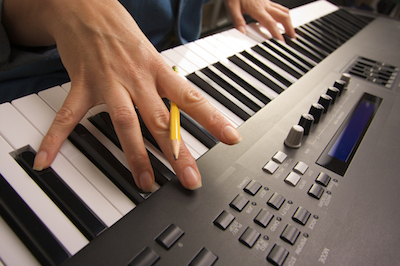It’s the event of a lifetime. It’s just the singer and piano player up on stage in front of thousands of people. Then something happens. The microphone inside the piano fall and begin vibrating on the strings.
For many performers, nothing compares to an acoustic piano. They love the sound. But when you’re performing in front of thousands, clarity and amplification are necessary.
When digital pianos were first introduced in the 1980s, they offered solutions to all of the things that could potentially go wrong in a performance. With digital, there is no tuning before a show, no mics to connect and hook up, no risk of mics falling on the strings. But until recently, digital also meant sounding … electronic.
Acoustic pianos have a large soundboard that measures several feet in diameter. Their keys are weighted and provide a proper feel.
Digital pianos, however, had nothing more than a couple of speakers no more than six inches in diameter. The keys didn’t have the bounce or feel we’ve come to accept through years of practice.
And if it doesn’t feel or sound right, we can’t use it in the best of circumstances. Like performances in front of thousands of listeners.
But digital pianos have gotten better. They’ve taken a hybrid approach to offer the best of both worlds – the rich smell of wood and the feel of traditional spring steel piano strings – with the power of technology.
Today’s digital pianos come in simplest form – a digital version of an acoustic piano – up to one of the most sophisticated instruments that offer everything you could want from technology. You can get all the sound a traditional acoustic piano can produce, but with digital components that can give it an even better sound.
Is a digital piano in your future?

